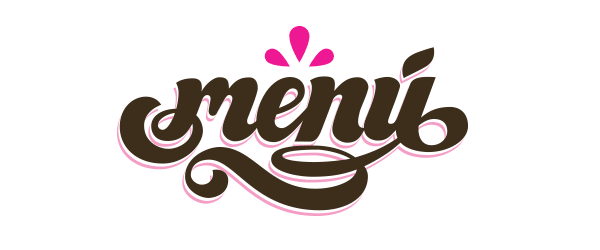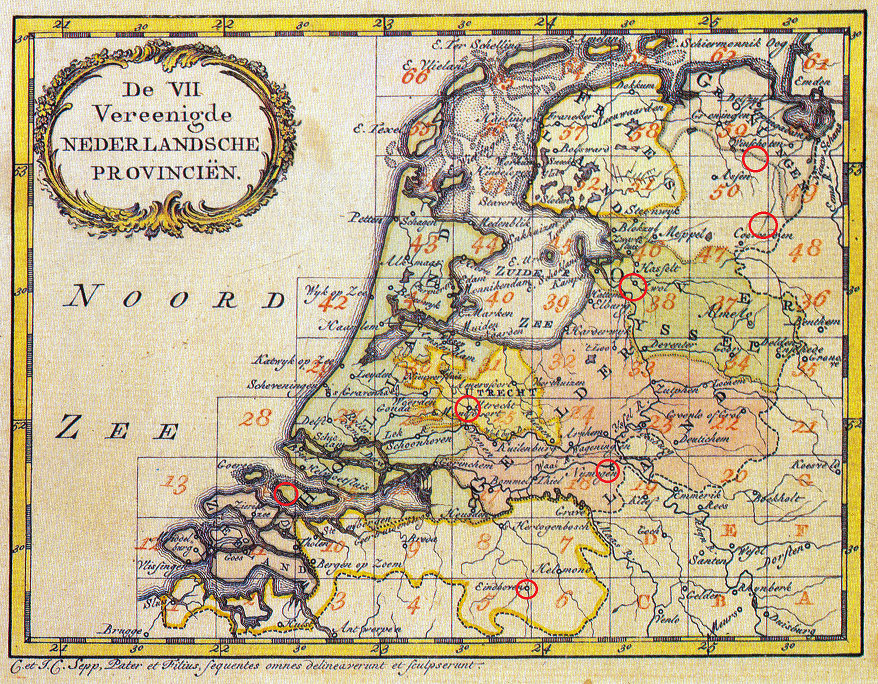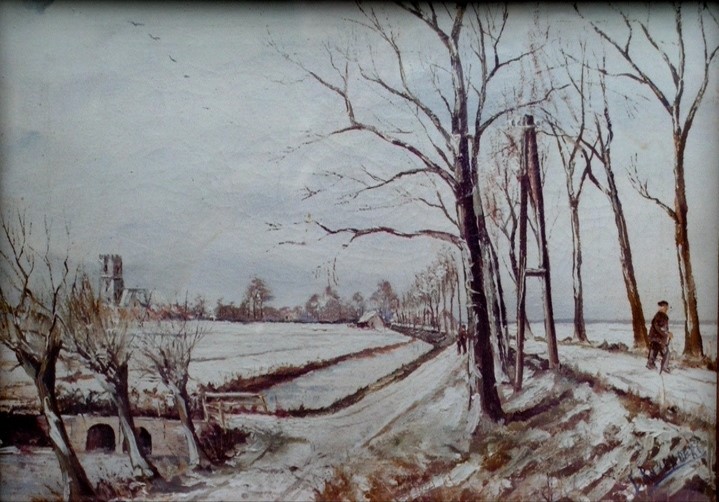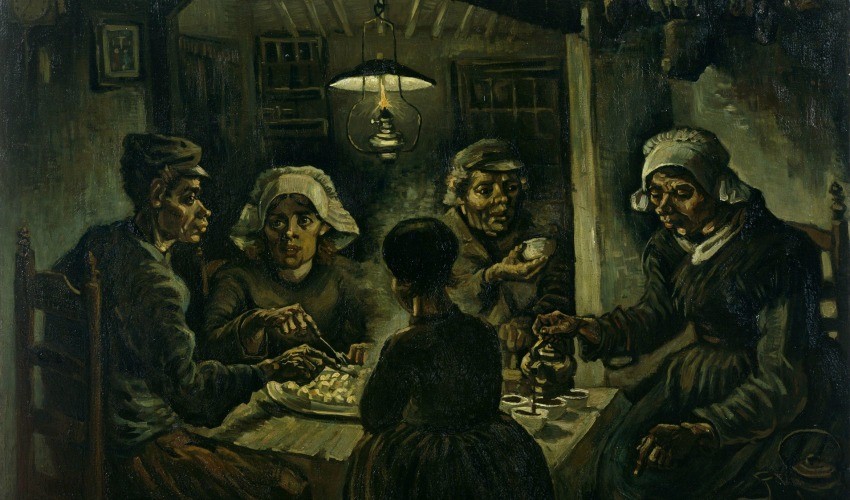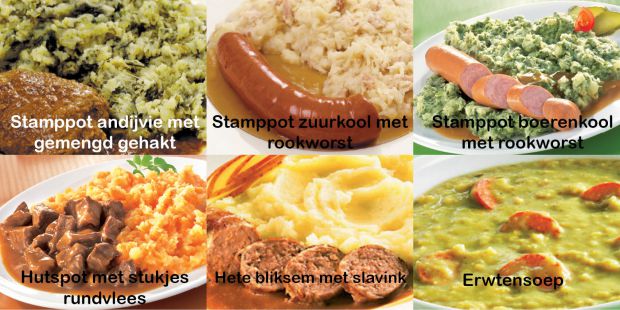Dutch dinner in wintertime: Heel Holland Prakt
Last year in wintertime, I invited my FRISS colleagues from abroad for a dinner party at my house. My foreign colleagues are tech specialists and at that time we employed people from Egypt, Jordan, Russia, Canada, Slovakia and Italy.
I made them different Dutch hotschpots like boerenkoolstamppot, hutspot, zuurkoolstamppot and rauwe andijviestamp, in English respectively mashed kale, root stew, sauerkraut stew and raw endive stew: Heel Holland Prakt.
My objective was to explain to them where this kind of food originates from: the origin of Hollandse Pot.
I wrote a story about my own family that started a hundred years ago, right in the middle of World War I.
When leaving, everybody thanked the man-about-whom-I-do-not-write and me for our hospitality, but afterwards I didn’t hear anything anymore, so I thought, they probably must have found it a bit strange what I’ve been doing.
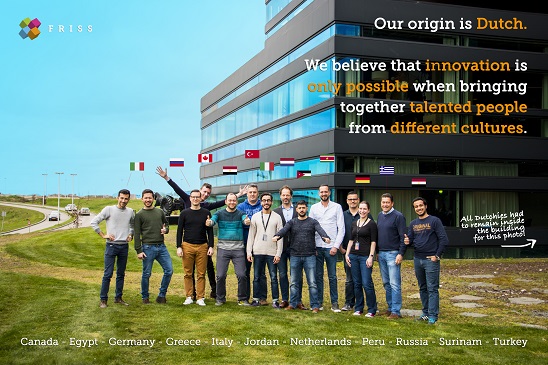
On this picture not only the techies are captured, our sales people from abroad are also on the picture
Feedback
However, two weeks ago two of them independently from each other came back on this evening, both with a different scope.
One of them really loved our house, with quite high ceilings and the small staircase you have to climb to get to the front door. Nowadays, he sometimes walks through Utrecht and just likes to look to the way houses are build in our country.
The other told me last week, that amongst the top 10 experiences of his first year in the Netherlands, the dinner at my house was one of them. Especially the personal story I told about my own family.
Today, I decided to look up my story of that evening and turn it into a blog. Which I did, otherwise you wouldn’t be reading my story right now. 🙂
So please, read the story on the origin of Hollandse Pot and you will understand why Heel Holland Prakt in the wintertime (Heel Holland Prakt = everybody mashes their food).
Once upon a time….
My story starts one hundred years ago. In 1917, Europe was in the middle of World War I and Holland was ‘neutral’. This sounds safe, but it didn’t mean that everything was alright. There was shortage in everything. In clothes, in shoes, in food. The greater part of the Dutch people at that time, was very, very poor.
Excercise
Please, close your eyes and imagine that you are on the countryside a hundred years ago.
It is winter and the temperature is about to drop under zero degrees Celsius. You’re freezing in your old coat and worn shoes. Where you are standing, the bare, flat and cold land is surrounding you. Everywhere you look around you, you see the horizon and now and then you see a small house standing alone in the countryside. The wind is fiercely and cold. It is coming from the South-West, bringing cold and wet rain that occasionally changes into wet snow.
We are in the South-West of the Netherlands on an island, called Goeree-Overflakkee. This is where my grandparents from father’s side lived.
Please, open your eyes again.
Goeree-Overflakkee – Middelharnis
In the picture at the back you see the small village in which my family lived: Middelharnis. My family over there was very poor. They had to live from sixteen Guilders a week and this included the rent of their small labor man’s house (a Guilder was less than half a Euro).
Grandfather – Han Verduin
My grandfather, who my sister and me called ‘opa Middelharnis’, went to school until his 11th birthday, after that he had to work on the land of rich farmers as a farmhand.
In 1917, he was 14 and was working on the land. He did so in spring, summer, autumn and wintertime. My grandfather really hated it to be treated like someone else’s ‘possession’. He worked for several farmers, got fired the same amount of times and finally found his destiny at the water pumping station called ‘gemaal’, where he worked over forty years as a works-man in the service of the ‘Waterschap’, which was in those days still a governmental organization. Doing this, he controlled the water in the ‘polder’ of Overflakkee.
Grandmother – Kee (Cornelia) Verduin-Vos
My grandmother ‘oma Middelharnis’, had to start working when she was 12, this was in 1916. She left her house to work as a resident servant maid for rich farmers.
After my father was born, my grandmother had to stop working as a servant maid. This was normal at that time. Holland even had a law that prohibited married women to work outside their house. A man should be able to support his family alone.
Religion
This part of the country was, and still is, very religious. They were Protestant and were members of one of the really strict versions of that religion: Gereformeerde Bond, also known as Nederlands Hervormd op Gereformeerde Grondslag.
In Holland you still can detect a corridor of very strict Protestant people, it’s called the Bible belt. Below that belt live(d) Roman Catholics and above the belt the people that practice(d) milder versions of Protestantism.
Father – Maarten Verduin
Because my father was an only child, my grandmother could go working as a maid again when he was going to secondary school. Doing this, they could afford the costs of the HBS (Hogere Burger School, nowadays the VWO, Preparing School for Scientifically Education).
He was called ‘Kee’s student’ as he wouldn’t bother to feel himself more than other family members, who were all visiting the Ambachtsschool (vocational school) or the huishoudschool (household school).
After finishing secondary school, he left the island for military duty and after that he started working for Philips in Eindhoven, in the South of the Netherlands. After nine years he switched to the University of Technology in Eindhoven.
By that time, me and my younger sister were already born, we were brought up in Eindhoven.
Groningen – Veendam
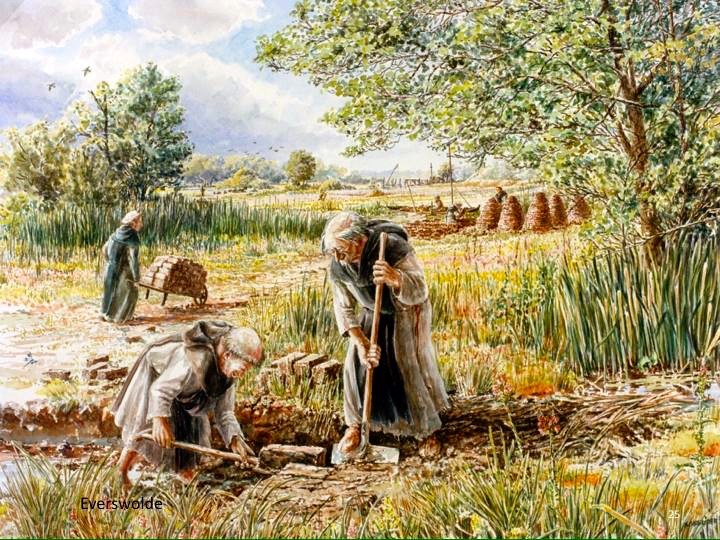 My grandmother and grandfather from my mother’s side originated from the very opposite of the country of Holland: they were born in Veendam, a village in the most northern province called Groningen.
My grandmother and grandfather from my mother’s side originated from the very opposite of the country of Holland: they were born in Veendam, a village in the most northern province called Groningen.
Over there, most men worked as peat worker, earning very little money or earning nothing at all. Girls were, as everywhere in Holland in those days, working as resident servant maids.
In Groningen socialism (social-democracy) evolved from these circumstances in which most people were poor and only a few were very rich, mostly farmers and a few dignitaries like the doctor, the notary and the Mayer. The church was not as strong and influential as in other parts of the country and the people were known as being stubborn.
There was, and in fact still is, a huge amount of unemployment in this part of the country. My grandfather, who was a trained gardener, couldn’t find a job, so he decided to look for work elsewhere. My grandmother, like my grandmother in Goeree-Overflakkee, was also working as a servant maid.
Eindhoven
My grandparents moved to the South and eventually landed in Eindhoven, where they lived in the Centauriestraat, in the southern part of the city. This is the town where Philips, the electronics giant with Dutch roots, was growing rapidly at that time.
Grandfather – Jacob Eenjes
My grandfather, who we used to call ‘opa Centauriestraat’, started working for the Douane (Customs), which would make him a civil servant for the rest of his working time. He started learning in the evenings hours, changed jobs to the Dutch Tax Agency because of World War II, in which all Douane staff got fired by the Germans, and at the Tax Agency he’s got himself a real career.
My grandfather was a fiercely convinced socialist, which was an abnormality in the Catholic south of the Netherlands. Next to that, he was a kind of front man in getting a better life for himself and his family.
Grandmother – Grietje Eenjes-Costmeijer
My grandmother ‘oma Centauriestraat’, was also politically active in Eindhoven at the Vrouwenbond of the Socialist Workers Union. I remember a discussion with her when I was a university student. She appeared to have a very progressive and well-thought opinion on abortion, which at that time was to get legalized in the Netherlands.
It must have been pretty harsh to live in a catholic conservative dominated region for ‘red’ people.
I was named after both my grandmothers: Grietje Cornelia.
Marriage
Coincidentally, both couple of grandparents got married on June 14, 1928. My father and mother were not born of course, so this is quite a coincidence.
Or it is not, and it was written in some stars somewhere in the universe.
Mother – Winy Verduin-Eenjes
The funny thing is that my mother, being brought up in an atheist and socialist family, loves the rites of catholism and she really hates fierce political discussions.
Nevertheless, socialism brought her something really important, she met my father when the ‘Jonge Socialisten’ (Young Socialists) had a meeting at my grandparents house. My father was the front-man of the group ant my aunt was one of the active members.
He and my mother met each other when he had to pass the kitchen, where she was reading, to go to the loo. She called him a ‘heethoofd’, which means someone’s having quite a temper (literally translated: hothead) but she liked his attention for her.
From all people mentioned above, my mother is the only one who’s still amongst us. I’m really grateful for that and I hope she will live for another decade or two (she’s currently 83 years old).
The food – stamppot
You probably think:
‘Okay so far so good, but what about the food?’
Well, this is quite simple.
Because of poverty, the people had to eat what the land brought them. In wintertime this was only potatoes and some vegetables like onions, carrots, kale, endive, and cabbage. They mixed it, because there were no dishes, people were too poor to buy these attributes. The whole family was eating from one saucepan.
This mixed food was called ‘stamppot’ which means ‘mashed food’, in English: hotchpot: Heel Holland Prakt.
There were no spices to season the food, there was only some salt. The food was filling all empty stomachs quite well because it is nutritious, as you will notice. It is not refined at all.
Nevertheless, most Dutch people like it and eat it during the winter season.
Vincent van Gogh
Vincent van Gogh made a famous painting called the ‘Aardappeleters’, the potatoes’ eaters (see above).
So, when in a few minutes you taste the Hollandse Pot, please remember it is typically coming from poverty. And that it’s feeding you well while it is cold in our wintertime.
Have a nice meal!
31 december 2017

